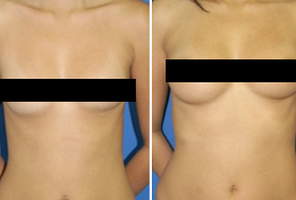What is a venous reflux exam?
A venous reflux exam is performed on patients to provide information for physicians on vascular health. This exam allows doctors to non-invasively measure the quality of vein function and to diagnose or rule out the possible presence of venous reflux or venous valvular insufficiency.
How does a venous reflux exam work?
There are two primary venous reflux exams that physicians use to evaluate vein behavior. Both are non-invasive and provide helpful information.
The first is a basic test that uses a sensor place on the patient’s ankle-area that accurately measures the amount of time needed for blood to travel from the leg to the heart and back to the lower extremity.
Another exam physicians can perform involves using ultrasound technology to track vascular patterns. Images provide doctors a map of veins, enabling them to identify faulty veins and valves and measure the direction and velocity of blood flow.
What are the benefits of a venous reflux exam over other similar procedures?
Procedures such as venography and arteriography can also be used to evaluate vascular health and aid in diagnosis, but venous reflux exams performed with sensors or ultrasound are far less invasive, providing patients with no risks or downtime.
Who should consider undergoing a venous reflux exam?
Anyone who already has been diagnosed with venous reflux or venous valvular insufficiency can undergo venous reflux exams to monitor their conditions. Individuals experiencing symptoms of these conditions, like skin discoloration, feelings of pain or heaviness in the legs, chronic swelling, venous ulcers or varicose veins, should consider having an exam in order to investigate the causes of these symptoms.
How is the procedure performed?
The venous reflux exam performed using a sensor involves attaching the sensor to the patient’s lower leg. Then, the patient will pump their foot up and down multiple times to encourage the blood to circulate up to the heart. As the blood returns to the ankle area, the sensor will measure how long circulation takes. Slow circulation can indicate low vascular efficiency. The test results are typically available a few days after the test is administered, and will be able to help physicians diagnose venous reflux or venous valvular insufficiency.
If your specialist recommends that you undergo an ultrasound venous reflux exam, a full duplex ultrasound will typically be used to examine both legs. The patient will recline on an examination table and their legs will be coated with a conductive gel. The specialist will pass the ultrasound wand over the legs, which will generate images of the internal vein structures and the movement of blood within them, providing physicians with valuable diagnostic information.
What is the recovery like?
Because venous reflux examinations are non-invasive, no down-time is needed. Individuals will be able to return to work or other daily activities right away.
When will I receive results?
Your physician will receive the results of your exam 1 to 3 days after it is completed. Based on the results, your doctor may recommend treatment or schedule further testing.
Are there any risks involved?
Due to the fact that this is a non-invasive examination, there are no true risks or side effects associated with it.
Will my insurance cover the exam?
Yes, the exam is usually covered by insurance providers, since it is most often conducted to diagnose or evaluate a medical condition.
How much does a venous reflux exam cost?
Factors such as geographical location, facility, provider’s fees, and insurance coverage can influence the overall cost of a venous reflux exam. Consult your specialist for a personalized cost estimate.
Disclaimer: This information is intended only as an introduction to this procedure. This information should not be used to determine whether you will have the procedure performed nor does it guarantee results of your elective surgery. Further details regarding surgical standards and procedures should be discussed with your physician.
By OnlineSurgery.com Staff
Updated: August 20, 2009

